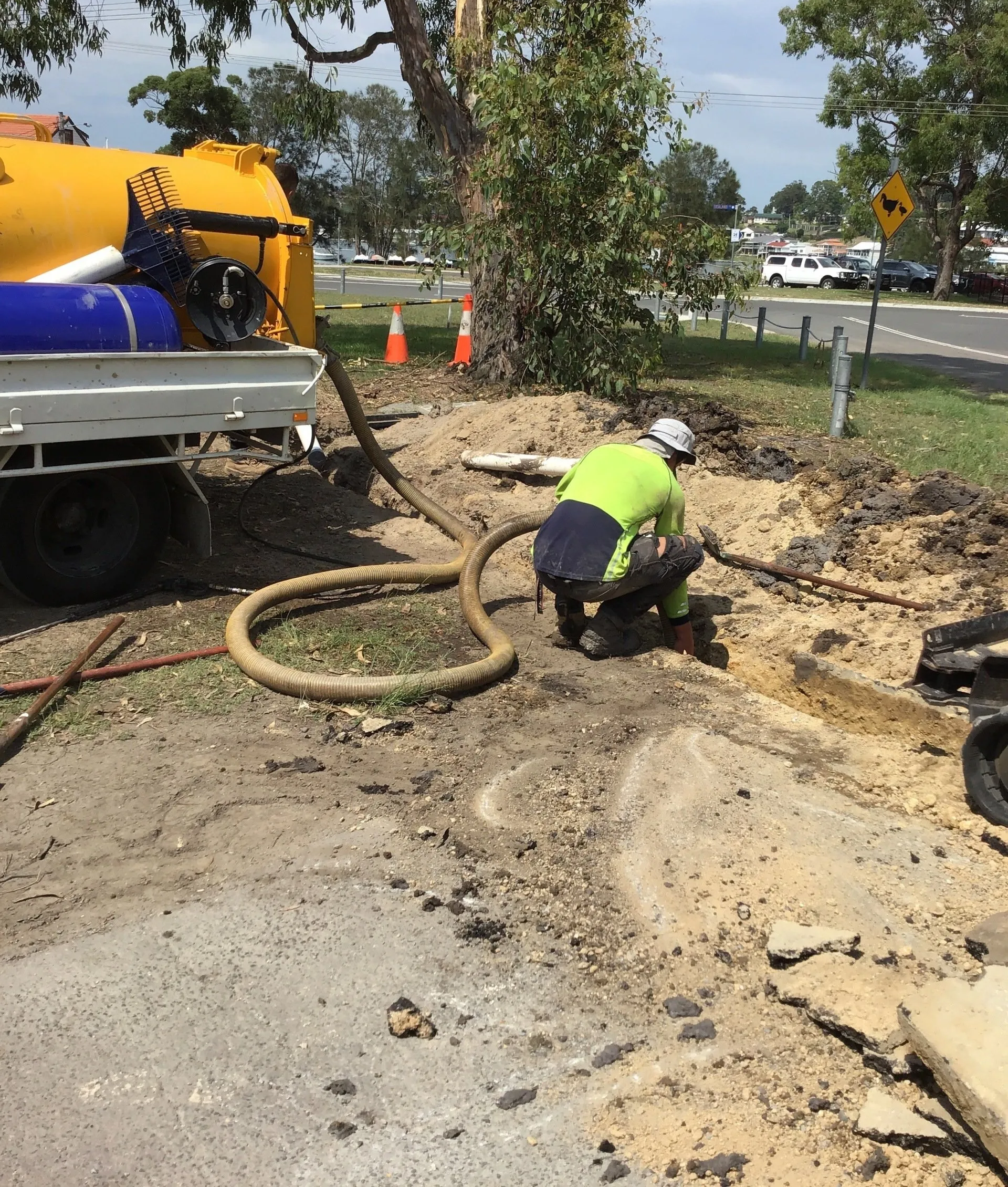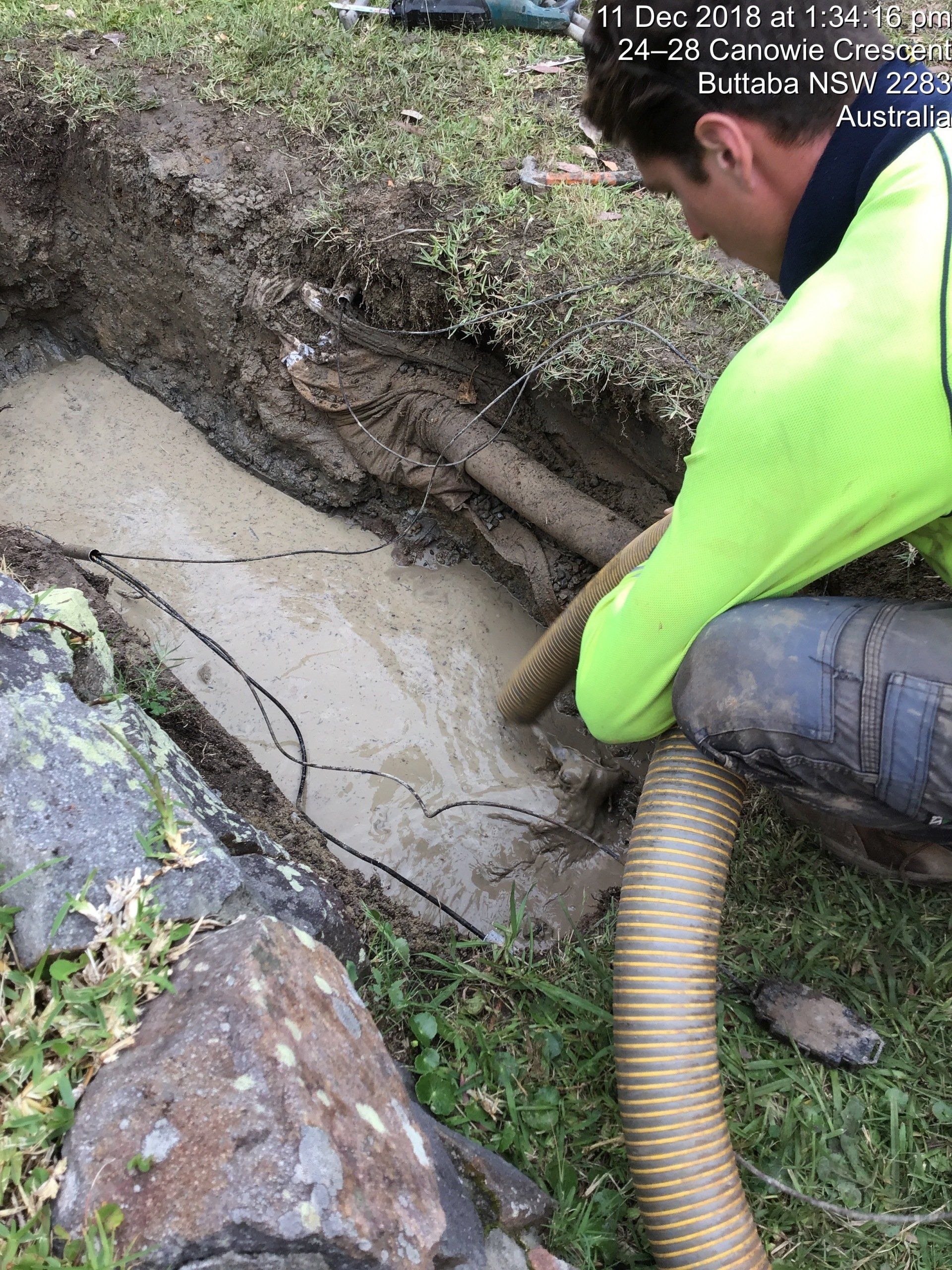Vacuum Excavation
Vacuum Excavation (also referred to as Non Destructive Digging or Hydro Excavation) techniques are widely accepted as the safest way to expose or excavate around underground services, such as electrical and communication cables, water, gas, storm water and sewerage pipe work. This non-destructive method of digging ensures minimal risk of damage to buried assets, compared to mechanical excavators which can easily damage existing underground locating services.
What is Vacuum Excavation?
The vac-truck or sucker truck carries a high-powered vacuum motor, a storage tank, and a high-pressure water lance. Firstly, the high-pressure water lance is directed at the area to be excavated. The high-pressure water (up to 6000psi) easily breaks up the material surrounding existing services. The water and broken up dirt and rock is known as slurry. This slurry is then sucked up by the vacuum motor and this material is deposited into the storage tank on the truck. Being able to direct the high pressure water lance in and around services, as well as to create deep pot-holes that are only 300-400mm wide allows even deep buried services such as high voltage power to be quickly and safely visually located before other excavation works commence.
Less Risk, Less Mess
To use an excavator or hand dig to locate such services would be highly laborious, requiring a much wider and larger hole to be dug, as well as a significantly higher risk of hitting and damaging the service. Vacuum excavation ensures minimal risk of damage to buried assets, compared to mechanical excavators which can easily damage existing underground services. Vacuum Excavation provides a risk-free means of safely exposing underground cables and pipes. No heavy excavation machinery tracking back and forth means minimal ground disturbance to the site surrounds, which results in a minimal footprint on the work area and minimizing restrictions to access and egress.


